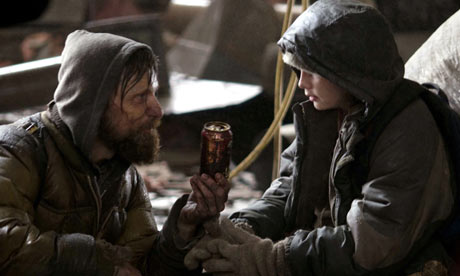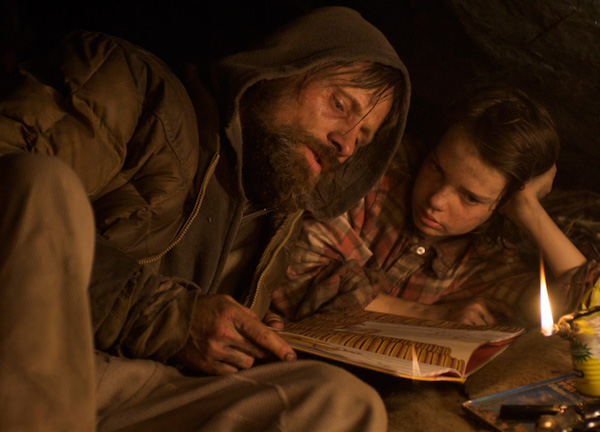Tristan Colaizzi
Six seconds isn’t a lot of time. It takes about six seconds to tie your shoe or unlock your door, but six seconds was the magic length that made Vine, a social media powerhouse, engage over 40 million users. The concept behind the app is users post six second videos that repeat on an endless loop, allowing users to re-watch Vines, over and over again without having to move a finger. Vine, under Twitter’s ownership, does have similarities to Facebook and Instagram, in its user base and popularity, but its unique six second platform is what allowed for Vine to break into the highly competitive market in 2013. Vine serves as a platform for raunchy, childish, low-blow carnivalesque content, while reshaping the internet in many respects by creating countless fads, which grabbed the attention of millions, such as What Are Those? Smack Cam, and Damn Daniel, to name a few. It changed how millions of people interact with each other and is, by Bakhtinian standards, a modern carnival of epic proportions.
The first logical question to ask when examining Vine is why six seconds was chosen. It turns out that is a pretty easy question to answer. In an interview that aired on NPR’s All Things Considered, Vine creator, Dom Hoffman, admitted that creators had toyed with the idea of ten seconds and five seconds which turned out to be too long or short respectively. (Sydell) They decided on six seconds because it “allowed for the aesthetic feel the creators wanted but preserved the quickness they wanted to promise users.” (Sydell) After deciding on six seconds and realizing that the videos “end[ed] very quickly and [] felt anti-climactic,” Hoffman added in the unique endless looping feature, giving birth to a non-stop, hectic, carnivalesque atmosphere that all vines have. (Sydell) But even though six seconds was chosen because it felt right to the creators, why is it the formula that became so popular? The answer is in our attention. In today’s world and especially online everything happens quicker and more seamlessly, so to grab someone’s attention can be difficult and to keep it is in another challenge entirely. Getting someone’s attention is more on the users of Vine than anything else. If your content is interesting, people are going to look at what you have to say. However, content is not exclusive to Vine, the same people can use Facebook or Instagram to spread their ideas too, and they do. What is unique to Vine is how the app keeps your attention. Psychologists have created many different models of memory over the last century that try to explain how we pay attention and store memories. One of these models is the “Multi-Store Model,” by Richard Atkinson and Richard Shiffrin. The model published in 1968 is relevant because it gives time limits for the three classes of memory; sensory register (several hundred milliseconds), short-term store (30 seconds or less), and long-term store (indefinite). What Vine does, different from Instagram and Facebook, is their platform exists only in short-term store, more commonly known as working memory. (Atkinson) What this allows for is the user to view many videos in a very short period of time, paying attention to the video in its entirety. In a perfect carnival there is mixing of people and ideas, so much mixing and so much happening all at the same time that it becomes chaotic and crazed. A Vine feed is the same thing, an infinite number of diverse six second videos mixing one after the other in one chaotic all containing app. It isn’t possible to become bogged down in one vine for half an hour like can happen with a video on Facebook, instead by keeping the user’s attention in short-term store she is constantly inundated with new, different, exciting information just like in a Bakhtinian carnival.
This carnival is not exclusive either. For as long as it has been around, Vine has been absolutely free to download from the Apple app store and later free on Android as well. Any smartphone has a camera, and almost everyone, regardless of class has a smartphone. Given it may not be the newest version with the best camera, but you don’t need a good camera to use vine. In fact, in an all-time greatest Vines compilation on YouTube the vast majority of the videos are blurry, with muffled audio. (Best Vines Of All Times) This all is to say that Vine is accessible to all, and it can be seen in its diverse user base.
The modern carnival’s platform may be the structure of the app, but it is the content on Vine that makes it a carnival. The carnival as Bakhtin put it is a “suspension of all hierarchical rank, privileges, norms.” (Bakhtin 87) The best content to look at is the content that has been seen by the most people on Vine, therefore the users that have the most loops played of their vines. One of those people is Matthew Espinosa, a kid I grew up with.
Matthew Espinosa is a nineteen-year-old from Northern Virginia who attended Bishop Ireton High-School where he played football and lacrosse. He comes from a middle class family living in the suburbs of DC. Matthew also has over six million followers on Vine and has now starred in his own movie. But when Matthew was 15, before Vine landed itself in every teenager’s phone across America, he was just another kid in my neighborhood. He went to the same elementary school, and played in the same sports leagues as every kid in our town. Matthew is a normal kid, and he became one of the most famous Viners of all time. Vine is not an app whose content is dominated by famous celebrities or political figures, in fact only one person on the list of top fifty Viners was previously famous. (Rankzoo) The other forty-nine were kids just like Matthew who millions and millions of people loved for their vines. Matthew puts it perfectly in one of his vines where he says, “I’m not famous, I’m not in movies, TV shows, magazines, I don’t have paparazzi, I’m just a kid with a camera and a Vine account,” that was before he reached six million followers. Matthew’s vines were for the average kid, not a bloating of an ideal to live up to. Matthew and Viners alike brought the carnival down to the people, they didn’t hold it above their heads. One example of this common vine was one where Matthew recounts a childhood fear, “When you’re in line at the grocery store and your mom leaves you; She’s coming I swear, I don’t know how to use a credit card [starts crying], [pulls out phone] mom I need you! Hurry up! [then more exaggerated tears]” (Huge Matthew Espinosa 15:50) In another he exaggerates the fearful moment we have all had while dreaming, “Am I the only one that literally has a heart attack when you’re like half sleeping and half awake, and you trip in your dream and you wake up like, like crying and you’re like Uggghmmeee [starts crying in tears]” (Huge Matthew Espinosa 16:30) Across most of his vines Matthew over-dramatizes everything he says or does. In doing so he embarrasses and makes a fool of himself, by screaming and crying in a real grocery or poking fun at the childish terror he sometimes feels while dreaming. But, in Vine, just like in Bakhtin’s carnival, it is precisely the suspension of seriousness and formality that qualifies something as a Carnival. Bakhtin notes that “in reality, it is life itself, but shaped according to a certain pattern of play.” (Bakhtin 86) The vines are real, they do exist in reality, but under their own rules.
Matthew’s Vines, although carnivalesque, don’t entirely show a dissolution of social boundaries. But we can see this in the most famous Viner of all time, Andrew B. Bachelor. Unlike Matthew who comes from a white middle class family, Andrew, better known as King Bach is an American immigrant, initially born in Canada and raised by two Jamaican immigrants. Both Bach and Matthew were unknown before Vines release in 2013, and now sit with a collective 22 million followers. (Rankzoo) Accompanying them on the top are Lele Pons, and Brittany Furlan, two female Viners. The diversity of race, sex, and economic status of the most popular Viners shows the dissolution of social boundaries that the carnival calls for, unlike the predominantly rich, white stars of Hollywood. Moreover, if Vine truly is a dissolution of social boundaries, then we should see social interactions of people with wildly varying social backgrounds. The most prominent Viners have numerously made appearances in each other’s Vines, not as an outsider sitting in one of Ellen’s white chairs, but as an integral member of the Vine. For example, King Bach and Brittany Furlan often play a couple in many of their shared Vines. They partake in the raunchy unfiltered chaos that is Vine’s carnival seamlessly together, and they are only able to do so because of the dissolution of social boundaries that exists. It is precisely this type of qualification that makes Vine a carnival under Bakhtin’s classification.
King Bach’s Vines show what Bakhtin calls a “marked suspension of all hierarchical rank, privileges, norms.” (Bakhtin 87) Many of King Bach’s vines do this through racial play with police. He takes the power structure in America and reverses it. Bach, just like Matthew often does an exaggeration of typical life, seen in one of his videos where he gets pulled over by a policeman who then frames him with alcohol and a gun, because he is black. (King Bach Police Vine) By making this Vine, Bach is calling out the injustices in the ranks and norms of our society. His voice gets heard in Vine, not the voice of the policeman that is quoted in Sundays newspaper. He is turning society upside down by making his, economically and socially depressed voice, heard over the policeman’s. Bach goes from being the town peasant to being the King. This theme continues over to another one of his Vines where Bach is pulled over by an officer who asks him “do you have any idea how fast you were going?” to which Bach responds, “according to my snapchat selfie, 24 miles per hour, ya bitchhhhhh.” (Ultimate King Bach 5:55) In real life if Andrew B. Bachelor said this to a police officer, not only would he be ticketed and arrested, but risks even being killed. King Bach’s ability to do something so unrealistic and backwards from real life, yet playfully humorous goes to show how Vine is a modern carnival. Vine is a place where diverse people can disregard the rules and hierarchies that normally govern them, and in an endless six seconds of raunchy unfiltered chaos flip the rules of society.
Unlike a Mardi Gras carnival Vine was created to turn a profit. This requires Vine, just like Facebook and Instagram to have advertisements. But unlike Facebook and Instagram, Vine’s advertisements do not compromise its ability to be a Carnival. If we look at advertisements on Facebook they often surround the user’s news feed. On Instagram advertisements are placed into a user’s feed, often looking just like a post your friend would make. But on Vine advertising is different. For example, if you work in marketing for Nike and you want to advertise a new shoe that is coming out, on Instagram you would pay to post your advertisement on a million feeds and it would come up as the users scrolled through. On Vine, however, you pay them to advertise the new shoe, but they don’t just throw it into users feeds. What Vine does is they reach out to a famous Viner who has followers that are likely to buy Nike, such as King Bach, and he would make a vine where he says “Check out the new Nike shoes I just got, they aren’t out yet, my friend hooked me up, but you can pick them up on December 3rd.” But King Bach doesn’t have to make that Vine if he doesn’t want to. If he decides that he is against Nike for some reason Vine cannot make him post a video. They cannot force content into the users’ phones like Facebook and Instagram do. In other words, the power of the carnival is still in the hands of the people who populate it. The lack of control on other social media platforms is striking. On Facebook and Instagram you might think that by having ads surrounding your feed, or mixed into it, doesn’t affect what you are consuming, but psychology says otherwise. These ads cannot be weeded out or ignored because of the way that all humans pay attention to what is in front of them. As it is noted in Attention by Alan R. White, “when one attends to X, e.g [Facebook or Instagram], although there must be some description of X, e.g. as [Facebook or Instagram], under which it is true that one is aware of X or realizes that it is X, yet it is not merely possible but very common that one does not realize that in paying attention to X one is paying attention to Y” e.g an advertisement. (White 1) White is saying that in being focused on your feed on Facebook or Instagram you are, by default, subconsciously playing attention to the ads that surround it.
So it seems like Vine has struck gold. It has provided 40 million users with a modern version of Bakhtin’s carnival. In all controllable aspects of the app that is undoubtedly true, but that doesn’t mean it’s possible. A little under a month ago Twitter announced that after five quarters of loss and firing nine percent of their employees they would be shutting down Vine. The carnival was no longer profitable, at no fault of its own, and we cannot blame Twitter for shutting it down. In fact, Vine’s closure says nothing about the efficacy of the app. It says something about the industry that the carnival had to exist in. An industry that values profit over the carnival.
Works Cited
Atkinson, Richard C., and Richard M. Shiffrin. “STORAGE AND RETRIEVAL PROCESSES IN LONG-TERM
Bakhtin, Mikhail. Rabelais and His World. Compiled by Stephen Duncombe, London, Verso, 2002.
“Best Vines Of All Times (Best Compilation) (@VineCreative).” Youtube, www.youtube.com/watch?v=k1MLpsU7QWs. Accessed 17 Nov. 2016.
“Huge Matthew Espinosa Vine Compilation – All Matthew Espinosa Vines (212 Vines) – BEST VIN.”Youtube, 23 Aug. 2014, www.youtube.com/watch?v=e0qbKoq-zjI. Accessed 17 Nov. 2016.
“King Bach Police Vine.” YouTube, www.youtube.com/watch?v=Na88ilPgikI. Accessed 17 Nov. 2016.
MEMORY.” Psychological Review, vol. 76, no. 2, 1969, pp. 179-93. APA PsycNET, psycnet.apa.org/ journals/rev/76/2/179/. Accessed 16 Nov. 2016.
Sydell, Laura. “How Vine Settled on 6 Seconds.” NPR, 20 Aug. 2013, www.npr.org/sections/ alltechconsidered/2013/08/20/213846816/how-vine-settled-on-6-seconds. Accessed 16 Nov. 2016.
“Ultimate King Bach Vine Compilation with Titles – All KingBach Vines 2016.” Youtube, 2016, www.youtube.com/watch?v=pPrDK_olPuM. Accessed 17 Nov. 2016.
“Vine Users Ranked in the Top 1000.” Rankzoo, rankzoo.com/vine_users?page=1. Accessed 16 Nov. 2016.
White, Alan R. Attention. Oxford, Basil Blackwell, 1964.
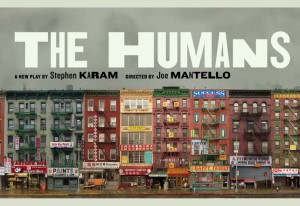
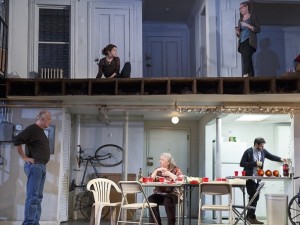
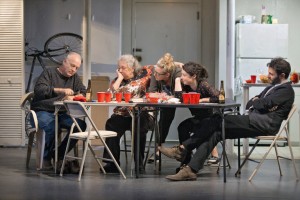
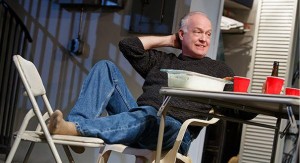
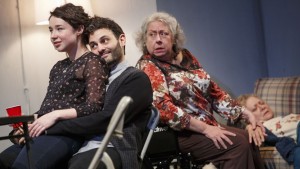
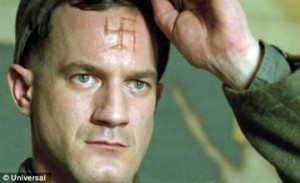
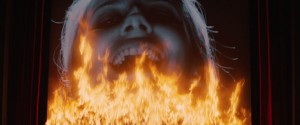
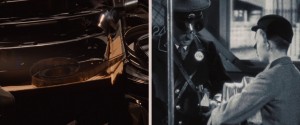


 Do the great orthodox works give their readers a head start on the path of human perfection? Shakespeare’s “Romeo and Juliet” teaches its readers of the many shortcomings of humanity as well as provides an ideal purpose to live by – love. The themes in the play present great dilemmas, and Shakespeare delivers his perspective on what would happen in those situations. However, I again cannot relate the conflicts in Shakespeare to my modern day problems. My fractured family cannot compare to those of either Romeo or Juliet nor am I a star-crossed lover kept from partner due to such conflicts. When I read Romeo and Juliet, I enjoy the fairy tale of the young couple, but there is no point while reading that I can take away any lesson to help me reach human perfection. If the purpose of the great works is to give their readers a head start on the path of human perfection, when does it do so? Instead of providing me with tools to become a better person “Romeoand Juliet” taught me that love kills. Although the play splendidly conveys its themes, those themes did not help me yet “Love Yourz” provides its readers with a clear model and purpose. J. Cole opens the song with the line, “No such thing as a life that’s better than yours.” From the line J. Cole teaches the reader to value their life regardless of where they are in life. J. Cole’s first few words immediately contradict Shakespeare’s words that detail the murders and deaths of multiple characters as well as the senseless violence portrayed. Continuing in explaining his message J. Cole later states, “Think being broke was better.” This quote is significant because J. Cole associates his views with the capitalist society in which I live and apply them. Through his words, he tells his listeners that he understands the circumstance that they may be in and teaches them to continue striving for self-love. When I see my parents struggle to make ends meet, I harp on the lyrics and refuse to value myself as anything less than exceptional. J. Cole dives deeper into the topic with, “What’s money without happiness?” In entirety I absorb the lyrics to debunk exactly how to get a head start on life – be happy and do so by loving yourself. If I believe that my life is valued regardless of what is going on and that I can it so by finding happiness, J. Cole has given me a firm head start that Shakespeare could not. It makes me wonder if the tragic events in “Romeo and Juliet” would have occurred had they heard J. Cole’s? Regardless of how Shakespeare romanticized it, Romeo and Juliet each ceased to believe in the purpose of their life and chose to commit suicide.
Do the great orthodox works give their readers a head start on the path of human perfection? Shakespeare’s “Romeo and Juliet” teaches its readers of the many shortcomings of humanity as well as provides an ideal purpose to live by – love. The themes in the play present great dilemmas, and Shakespeare delivers his perspective on what would happen in those situations. However, I again cannot relate the conflicts in Shakespeare to my modern day problems. My fractured family cannot compare to those of either Romeo or Juliet nor am I a star-crossed lover kept from partner due to such conflicts. When I read Romeo and Juliet, I enjoy the fairy tale of the young couple, but there is no point while reading that I can take away any lesson to help me reach human perfection. If the purpose of the great works is to give their readers a head start on the path of human perfection, when does it do so? Instead of providing me with tools to become a better person “Romeoand Juliet” taught me that love kills. Although the play splendidly conveys its themes, those themes did not help me yet “Love Yourz” provides its readers with a clear model and purpose. J. Cole opens the song with the line, “No such thing as a life that’s better than yours.” From the line J. Cole teaches the reader to value their life regardless of where they are in life. J. Cole’s first few words immediately contradict Shakespeare’s words that detail the murders and deaths of multiple characters as well as the senseless violence portrayed. Continuing in explaining his message J. Cole later states, “Think being broke was better.” This quote is significant because J. Cole associates his views with the capitalist society in which I live and apply them. Through his words, he tells his listeners that he understands the circumstance that they may be in and teaches them to continue striving for self-love. When I see my parents struggle to make ends meet, I harp on the lyrics and refuse to value myself as anything less than exceptional. J. Cole dives deeper into the topic with, “What’s money without happiness?” In entirety I absorb the lyrics to debunk exactly how to get a head start on life – be happy and do so by loving yourself. If I believe that my life is valued regardless of what is going on and that I can it so by finding happiness, J. Cole has given me a firm head start that Shakespeare could not. It makes me wonder if the tragic events in “Romeo and Juliet” would have occurred had they heard J. Cole’s? Regardless of how Shakespeare romanticized it, Romeo and Juliet each ceased to believe in the purpose of their life and chose to commit suicide.

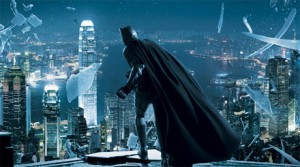
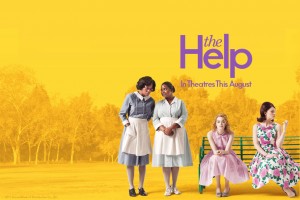
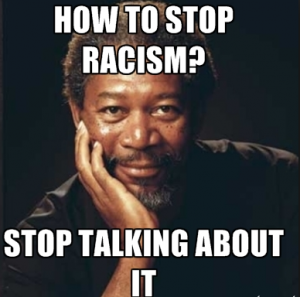
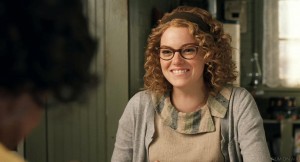
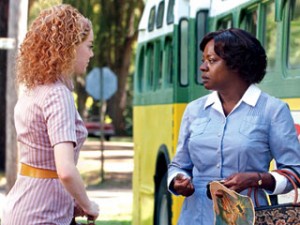
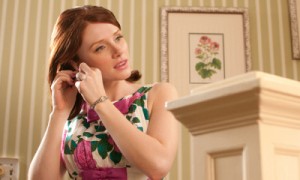
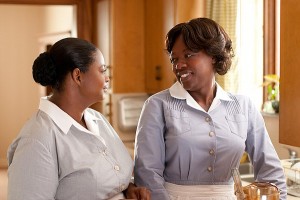
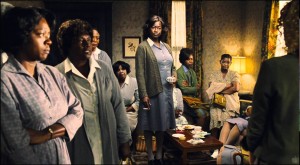
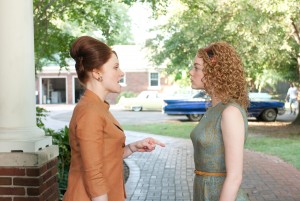
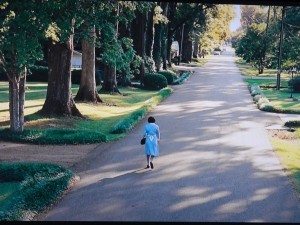
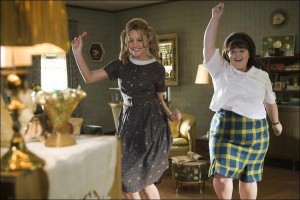
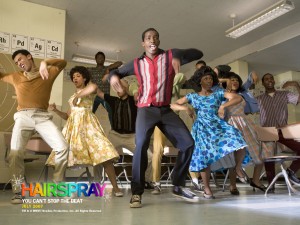
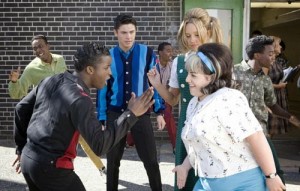
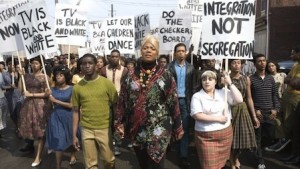
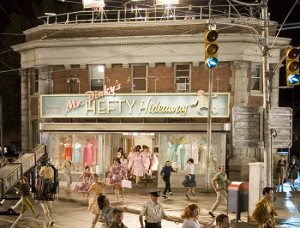
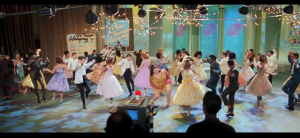

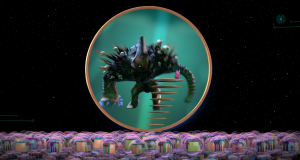

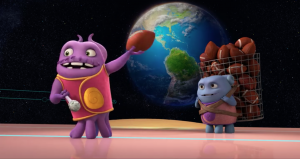
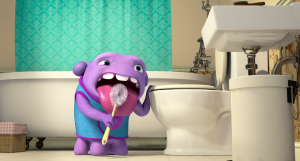
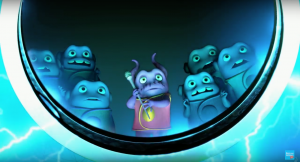

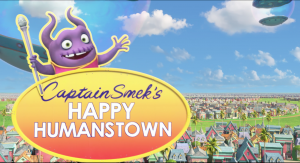

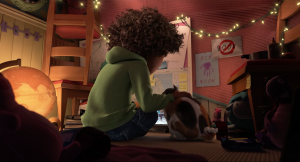
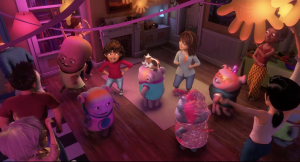
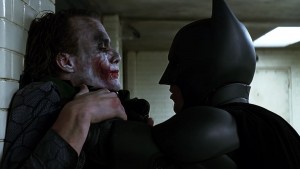


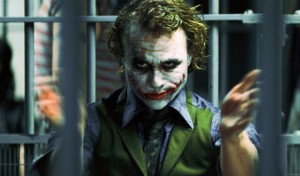
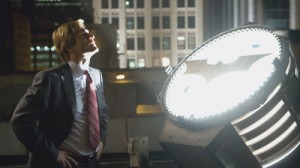 So how did the Joker create so much good through such bad actions? It’s the same way Batman couldn’t create good through doing good; he, in some sense created bad. Batman was never a hero of Gotham; he was just whatever they needed him to be. Like Alfred said many times throughout the movie, he was able to make the decisions that no one else could. He tried to inspire a city by showing that common people can stand up and rise above the ordinary to make the city a better place. But the reason he failed was because you can’t fight bad with good; you have to get your hands dirty. This is why the Joker is so glorious in establishing order. He knows Batman’s technique will never work, he knows that the only way to stop the crime in Gotham is to plunge the city into chaos. He shows the city of Gotham what real anarchy looks like, they experienced the terror he brought on them, and they came out a better people and a better city. You have to fight fire with fire, chaos with chaos. And it is only through chaos that we can have established order.
So how did the Joker create so much good through such bad actions? It’s the same way Batman couldn’t create good through doing good; he, in some sense created bad. Batman was never a hero of Gotham; he was just whatever they needed him to be. Like Alfred said many times throughout the movie, he was able to make the decisions that no one else could. He tried to inspire a city by showing that common people can stand up and rise above the ordinary to make the city a better place. But the reason he failed was because you can’t fight bad with good; you have to get your hands dirty. This is why the Joker is so glorious in establishing order. He knows Batman’s technique will never work, he knows that the only way to stop the crime in Gotham is to plunge the city into chaos. He shows the city of Gotham what real anarchy looks like, they experienced the terror he brought on them, and they came out a better people and a better city. You have to fight fire with fire, chaos with chaos. And it is only through chaos that we can have established order. When the 9/11 attacks occurred heroes were born. In one of the darkest hours this generation has seen, the common people of America rose up and became part of something greater than themselves. The first responders showed the courage within themselves to help protect and rescue the civilians in harm’s way. Regular citizens too rose up to the call, and instead of running away, ran into the flames or chaos and helped those injured from the attacks. It is in these times of great duress, brought upon by an outside force, that humans show their true colors. It is only through chaos that people see who they really are. This chaos shows the flaws in systems, the injustices hidden, and the good within. The Dark Knight shows us that only through chaos is order able to be established in our society. It shows how the 9/11 attacks, though were a terrible event in our nation’s history, ended up creating good in our society and created a safer nation.
When the 9/11 attacks occurred heroes were born. In one of the darkest hours this generation has seen, the common people of America rose up and became part of something greater than themselves. The first responders showed the courage within themselves to help protect and rescue the civilians in harm’s way. Regular citizens too rose up to the call, and instead of running away, ran into the flames or chaos and helped those injured from the attacks. It is in these times of great duress, brought upon by an outside force, that humans show their true colors. It is only through chaos that people see who they really are. This chaos shows the flaws in systems, the injustices hidden, and the good within. The Dark Knight shows us that only through chaos is order able to be established in our society. It shows how the 9/11 attacks, though were a terrible event in our nation’s history, ended up creating good in our society and created a safer nation.
